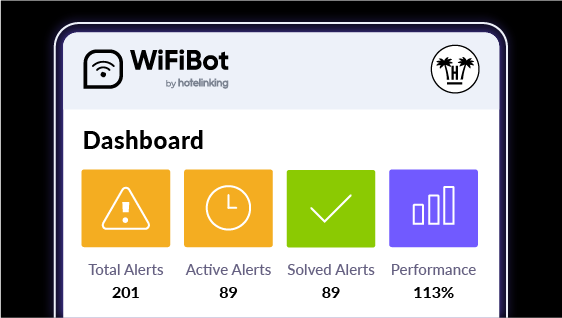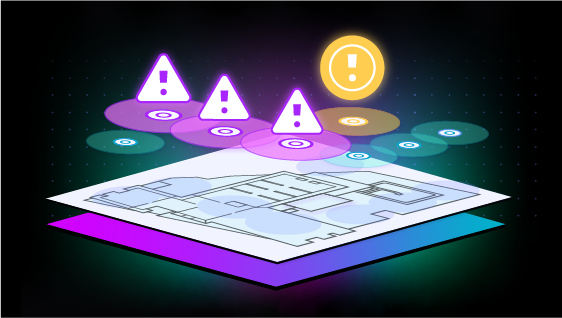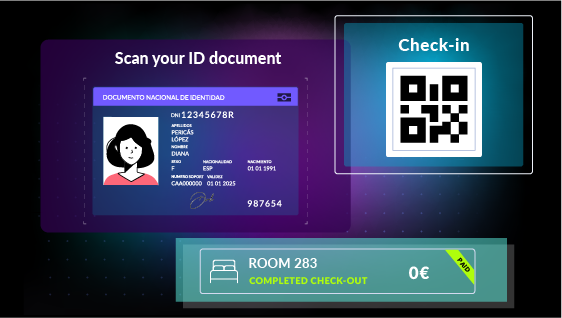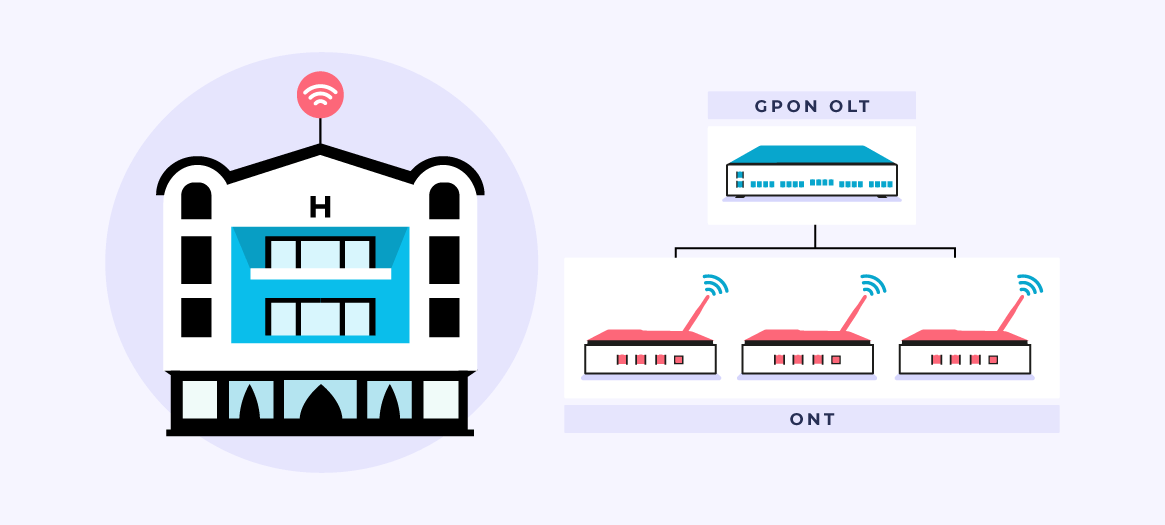
GPON monitoring: the invisible layer that defines hotel connectivity
The optical layer is the forgotten link in the hotel network. Advanced GPON monitoring detects invisible faults in ONTs, prevents fibre degradation and ensures stable connectivity. Discover how WiFiBot provides total visibility and transforms the guest’s digital experience.
The transformation of hotel network management
For years, hotel network managers had a direct and tangible approach to resolving incidents: when a problem arose, we would physically go to the location, connect our laptop to the floor switch, check the port status, and, if necessary, replace the problematic equipment with another in a matter of minutes. The diagnosis was visual, immediate, and mechanical.
With the emergence of GPON networks in the Spanish hotel sector in recent years, this paradigm has completely collapsed. We can no longer “plug and check” on a floor switch because the switch has disappeared. Connectivity now travels through fibre optics, passive splitters that consume no power and generate no logs, and ONT devices distributed across hundreds of rooms. We have had to learn—often the hard way—that GPON networks do not work like traditional Ethernet networks: the physical optical layer is invisible, silent, and extremely complex.
This is where tools like WiFiBot make a difference: they offer the ability to cross-check the entire installation, from the physical optical layer (power, attenuation, FEC errors) to the actual operation of the service delivered to the guest, without the need for physical travel and with real-time visibility of what is really happening on each PON link.
The diagnosis that no longer works
When a guest complains that “the WiFi is slow” in room 412, the IT team usually checks the status of the ONT via its management IP, checks the device’s registration in the OLT or verifies the assigned service profile.
What is almost never proactively checked is the fibre optic infrastructure (optical layer). When a problem arises, the usual procedure is to contact the installer to come in, take measurements with OTDR equipment and, with luck, identify the fault after several hours or days. And yet, in most hotels with GPON (Gigabit Passive Optical Network) networks, this is where the real culprits of instability lie: a degraded ONT, a fibre with excessive curvature (poorly installed or excessively bent fibre optic cable) or an oversaturated OLT.
Traditional monitoring systems are limited to checking whether the link is responding (“ONT registered”, “link up/down”), without measuring optical parameters such as reception power (Rx/Tx) or FEC error rate, so they do not detect progressive degradation or signal fluctuations.
The result: intermittent problems, misdiagnosis, total dependence on external installers, and hours—sometimes days—of frustration before the real source of the fault is discovered.
The optical layer, the weak link in the hotel network
GPON networks have become the connectivity standard for large hotel groups due to their ability to distribute Internet, IPTV, and management systems over a single fibre infrastructure.
However, that same complexity creates blind spots: the optical layer does not behave like a traditional Ethernet link. ONT devices do not “fail” suddenly; they degrade slowly.
A power level of –28 dBm, apparently within the operating range (-8 to -28 dBm according to ITU-T G.984), can cause micro-cuts and packet loss that guests perceive as unstable connectivity. The ideal range is between -18 and -22 dBm; values below -24 dBm already show instability during peak hours.
But there is a lesser-known problem: optical overpower. When an ONT receives signals above -8 dBm (e.g., -6 dBm), the receiver becomes saturated, causing signal distortion and increased BER (Bit Error Rate)—symptoms identical to low power. This typically occurs when an ONT is installed too close to the OLT without optical attenuators or when splitters with incorrect ratios are used.
In environments with dozens of floors, this progressive degradation multiplies until it affects hundreds of rooms without any control panel warning.
According to data from Hotelinking audits in Mediterranean properties (2024-2025), more than 60% of incidents attributed to “WiFi problems” actually stem from failures in the optical layer: insufficient or excessive power, contaminated SC/APC connectors, or PON port overload during peak occupancy.
Why GPON visibility makes a difference
Having visibility into the performance of ONTs, OLTs, and fibre links is not just a technical issue: it defines the quality of the guest’s digital experience.
A properly monitored optical infrastructure allows you to:
- Detect degradation before failure by measuring optical power levels (Rx/Tx) and FEC error rates in real time.
- Plan predictive maintenance, replacing ONTs or redistributing load between PON ports before they cause outages.
- Avoid misdiagnosis by differentiating between optical layer problems (power, fibre) and GPON configuration problems (service profiles, VLANs).
- Meet service level agreements (SLAs) based on objective data extracted from the OLT, not third-party reports.
In this way, optical monitoring ceases to be a technical detail and becomes a lever for guest satisfaction and operational savings.
How WiFiBot sees what other systems don’t
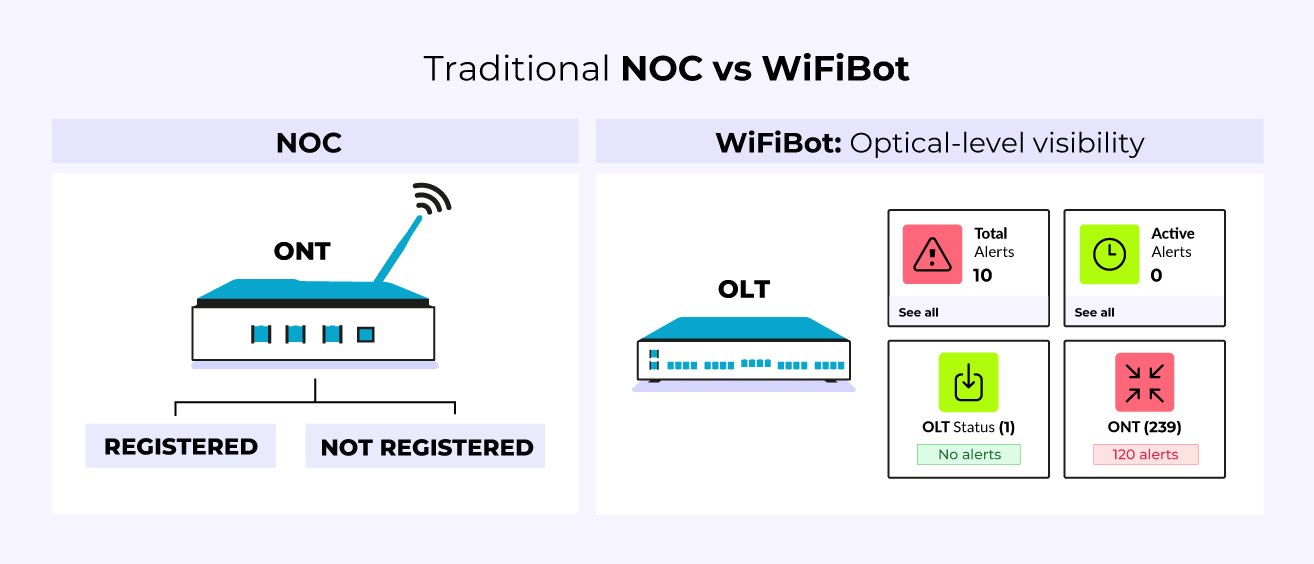
While traditional NOCs are limited to monitoring the logical status of ONTs (“registered/unregistered”), the WiFiBot platform extends the scope to the physical optical layer.
Its monitoring engine connects directly to the OLTs of each property, capturing ONT power, stability, and error metrics, correlating them with the guest connectivity experience.
Its capabilities include:
- Continuous monitoring of optical parameters and automatic alerts when values approach critical thresholds (-24 dBm for Warning, -10 dBm for overpower).
- Guided ONT replacement: identifies the affected circuit with room-level precision, isolates the device, and validates service restoration with post-intervention power testing.
- Predictive analysis that anticipates PON port congestion or ONT degradation before it impacts guests.
- Integration with multi-vendor networks (Huawei, Televés, TP-Link, Zyxel, Wisi, etc.) via SNMP, NETCONF and CLI, with a single visibility panel.
This approach eliminates the “blind spots” of legacy NOCs and turns GPON infrastructure into a manageable, measurable and proactive layer.
From reaction to prevention: the cultural shift
The leap to autonomous networks does not begin with automation, but with visibility. Without understanding what is happening in the fibre — beyond simply “ONT registered” — no algorithm can prevent what it cannot see.
That’s why GPON monitoring is the natural step after the transition from reactive to autonomous operations, described in our article “The new era of hotel network management“.
Integrating optical visibility not only improves uptime, but also frees technical staff from the burden of “searching blindly” among dozens or hundreds of ONTs.
In an industry where connectivity is now an essential service, every minute of additional stability counts as much as one more positive review.
Beyond WiFi: designing a network without blind spots
The future of hotel connectivity lies in fully observable infrastructures, from the optical layer to the last IoT device.
Organisations such as ITU-T, which defines international GPON standards (G.984.x, G.988 for OMCI), emphasise the importance of continuous monitoring of optical parameters and automated detection of degradation in critical environments. The advantage for hotels is not only technical: it is also economic and reputational.
Chains that monitor their GPON layer reduce incidents attributed to connectivity by 40% and improve their average guest-perceived connectivity scores by 15%.
Conclusion
The optical layer can no longer be an unknown quantity within the hotel network.
GPON visibility separates hotels that “react to ONT disconnections” from those that guarantee stable connectivity and continuous satisfaction. With tools such as WiFiBot, GPON network management moves from firefighting to prediction, prevention and optimisation.
And that’s not just technology: it’s digital hospitality at its finest.

